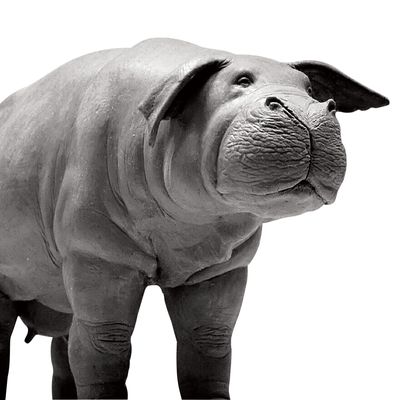
The premise of the movie Okja is simple: A corporation develops a genetically modified six-ton “super-pig” to solve world hunger, then a girl named Mija (Ahn Seo-hyun) adopts one named Okja as a pet and tries to save it from the slaughterhouse. But how do you convince an audience that a CGI creature is lovable enough that this girl (and the audience) can plausibly fall for it? We talked to Okja’s writer and director, Bong Joon-ho (The Host, Snowpiercer), and the VFX supervisor, Erik De Boer (an Oscar winner for Life of Pi), about the process — from sketches to models to computer animation — that gave birth to Okja.
Early sketches featured an enormous, snub-snouted creature with tiny ears.
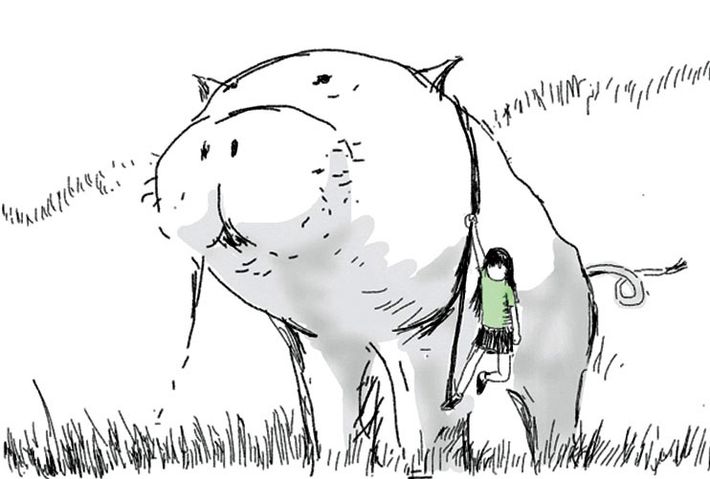
Bong Joon-ho: For me, the starting point was two aspects of this creature: It has to be massive in size, and it has to look kind, introverted, and sad. I made a few drawings and then met with the creature designer. We discussed the concept. Although this is an animal we have never seen before, it must look familiar, so it needs to have hints of animals we have seen: the pig, the hippo, the manatee. Then we began the design. There was a lot of trial and error in the process.
Erik De Boer: I was presented with the concept drawings, and [Bong] said, “I want to make a movie about this pig.” Later, a lot of people would tell me, “This is all up to you. If Okja fails, we don’t have a movie.”
Subsequent renderings shrank the creature and incorporated more aspects of the manatee, a marine mammal nicknamed “sea cow.”
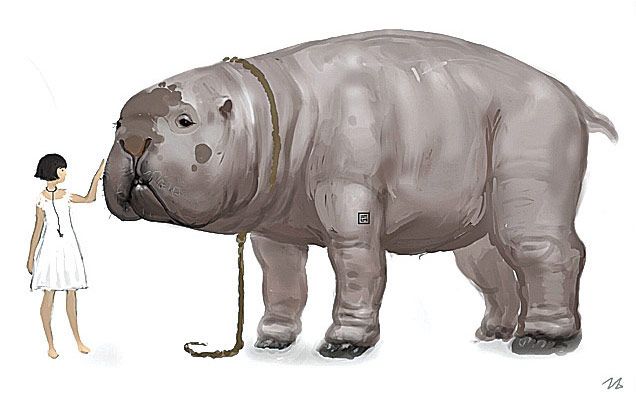
BJH: If you look at a manatee, it looks so kind, and it almost has an expression of being wrongly accused. We exchanged and shared more than 100 images of hippos and manatees.
EDB: We played around with the feet a bit, changed around the proportions, the size of the ears, put some fuzz and hairy stuff on her to make her softer and more feminine. All of it was geared toward making her appealing enough for us to fall in love with — and not so hideous a creature that everyone in the audience would go, “Oh, what the hell!”
To give actors something real to interact with, the production built a “stuffy” out of laser-cut foam, later replaced with CGI.
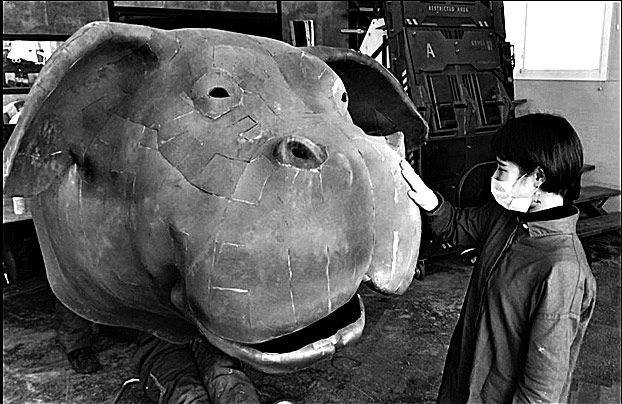
EDB: We didn’t have a puppet as such. We had something we called a stuffy. This animal is so huge — it’s six tons of pork — that there’s no way to successfully represent it on set. So we had these stand-in objects.
BJH: In the case of The Host, it was just a monster who attacked people from a distance. Here, the most important thing is the intimacy between Mija and Okja, so they must always hug, and sleep with each other, and have a close touch. So we needed a stuffy. We needed something that the cast could touch and interact with.
Several rigs allowed the actors to play off the creature’s presence, without necessitating an unwieldy torso.
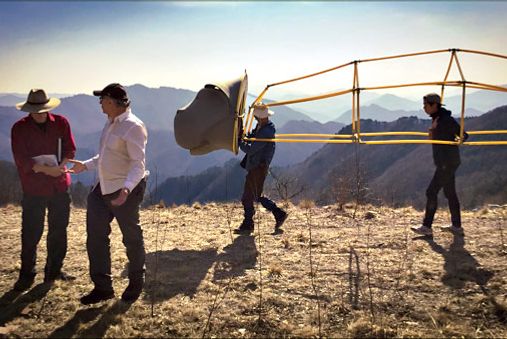
EDB: We had a rig called the push-pull rig. We had light heads, we had heavy heads — like, just the head of the pig, for instance, but light ones, so we could run around with them, and heavy ones, so we could push and exert some force onto people who interacted with it so it didn’t feel too light. It had to be heavy enough to get those forces generated but light enough to still be able to puppeteer it. The animal’s called a super-pig, but really it’s a hybrid — elephant ears, hippo body — so [for the animation] we keyed off those animals’ movements a lot.
In the end, they realized it all comes down to the eyes.
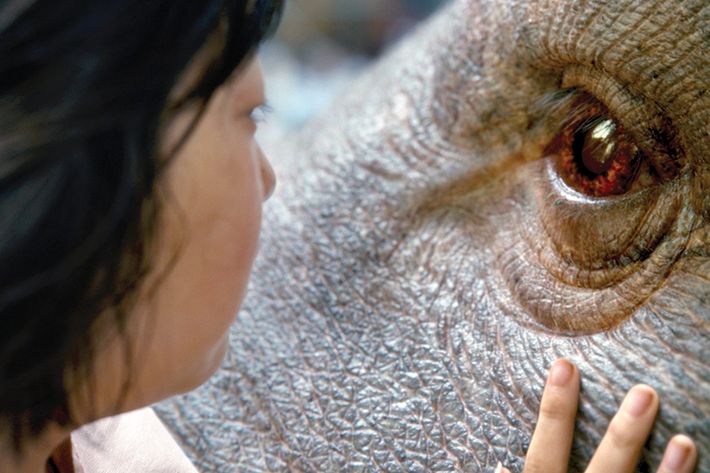
BJH: The size of the eye is very important. This is the dilemma: If it’s too big, it’s cute but cartoonish. If it’s too small, there’s less opportunity to express emotion through the eyes. If you look at Planet of the Apes, they did the eyes of Caesar so well you really feel the emotion. That’s what we aspired to: a feeling of uncanniness in the eyes.
EDB: I think when you watch this movie, what’s impressive is that it really feels like Mija’s connecting with Okja. We had a lot of fun making sure that Mija could focus on getting that relationship, that emotional tie, as convincing as possible.
BJH: Erik and I exchanged a lot of photos to capture the eyes of animals that portray a lot of emotion — especially this dog named Randy who is our key costumer’s pet. His eyes were very impressive.
Having given Okja eyes, large ears, and realistic skin, they still had to give it a personality.
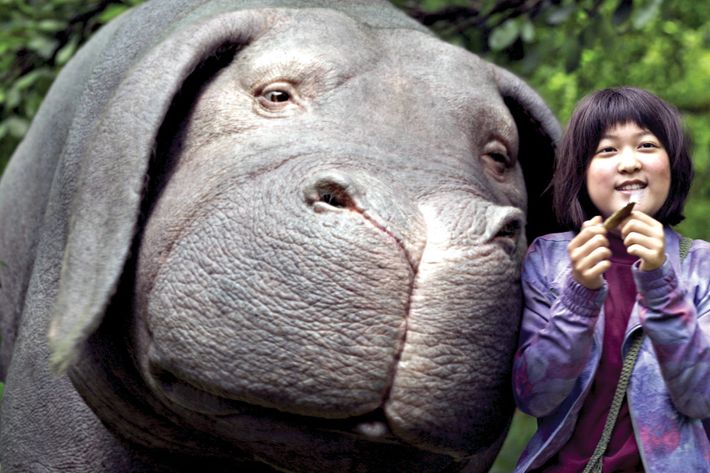
BJH: I don’t think of Okja as a metaphor. It doesn’t have any symbolism of any kind. I simply want to make the audience think that this animal is something that could happen in the very near future, like five years from now. In reality, there are such animals being developed. They’re developing a genetically modified pig. Genetically modified salmon has already been developed.
EDB: In terms of Okja’s demeanor and personality, Bong and I always discussed it as a very happy, friendly Labrador. I think we can all relate to that slightly older dog that is just happy to tag along, lumbers a bit, with floppy ears, looking up over its brows. That was the personality we wanted to give Okja: just a very content Labrador inside a super-pig body.
*This article appears in the June 26, 2017, issue of New York Magazine.

